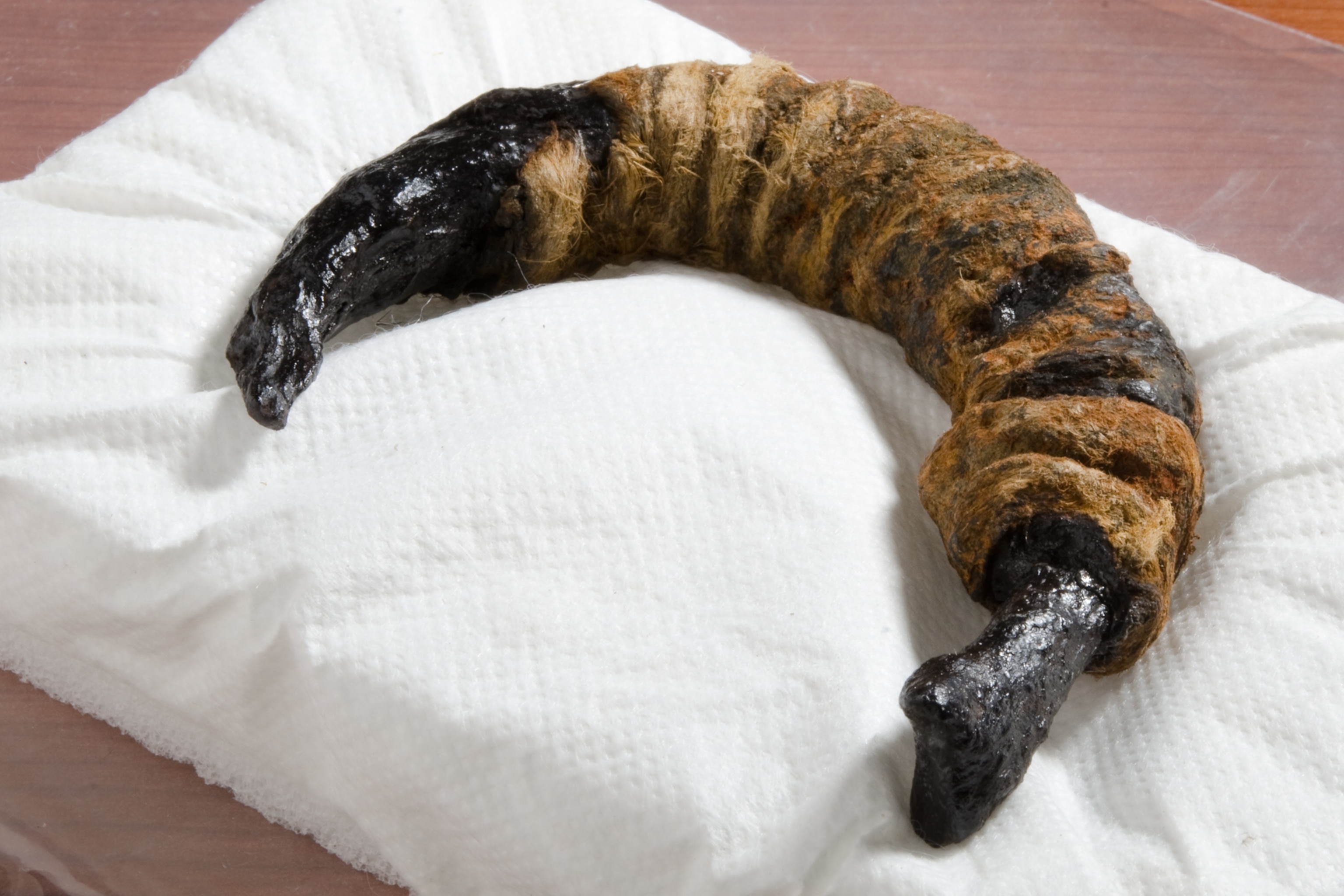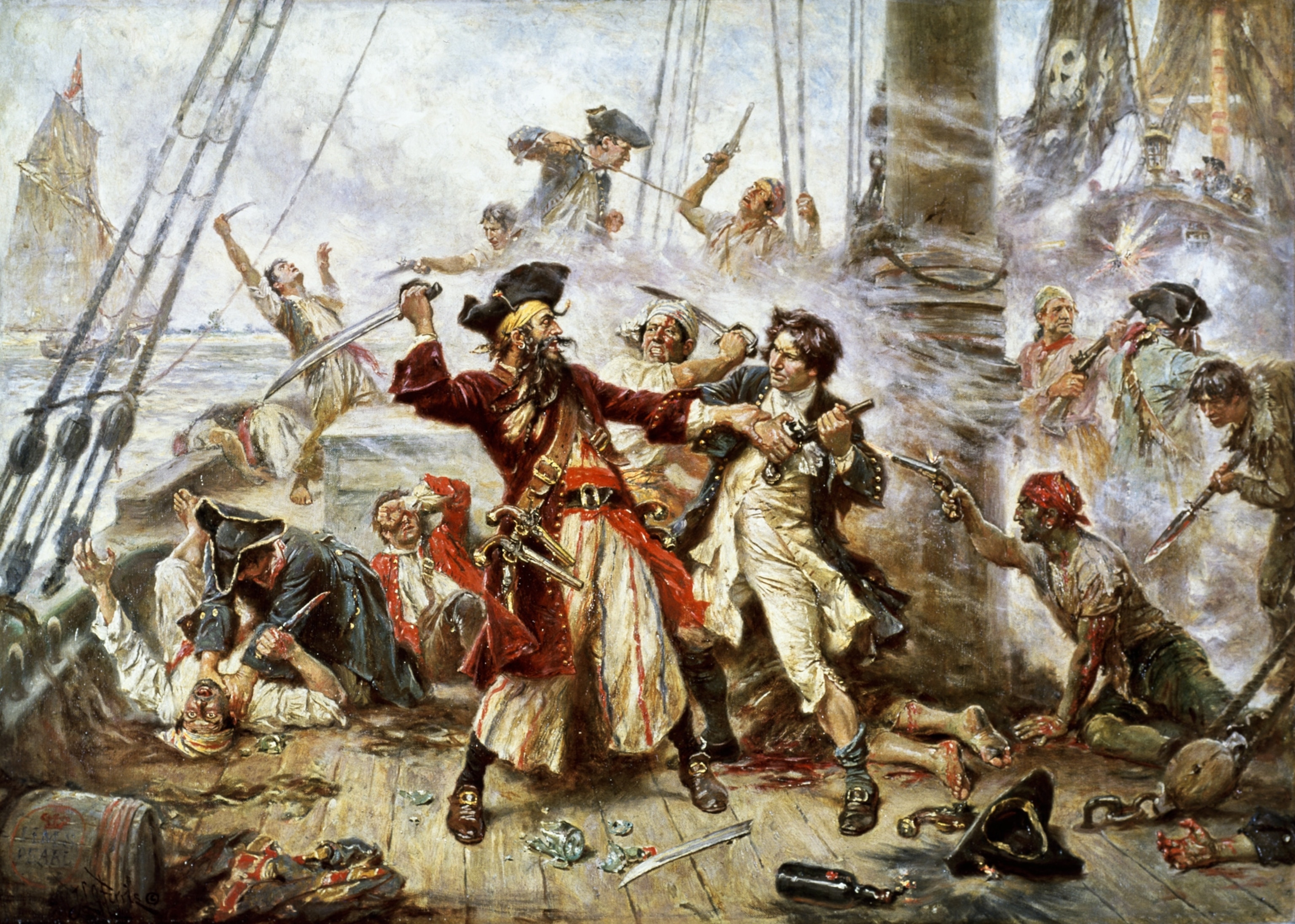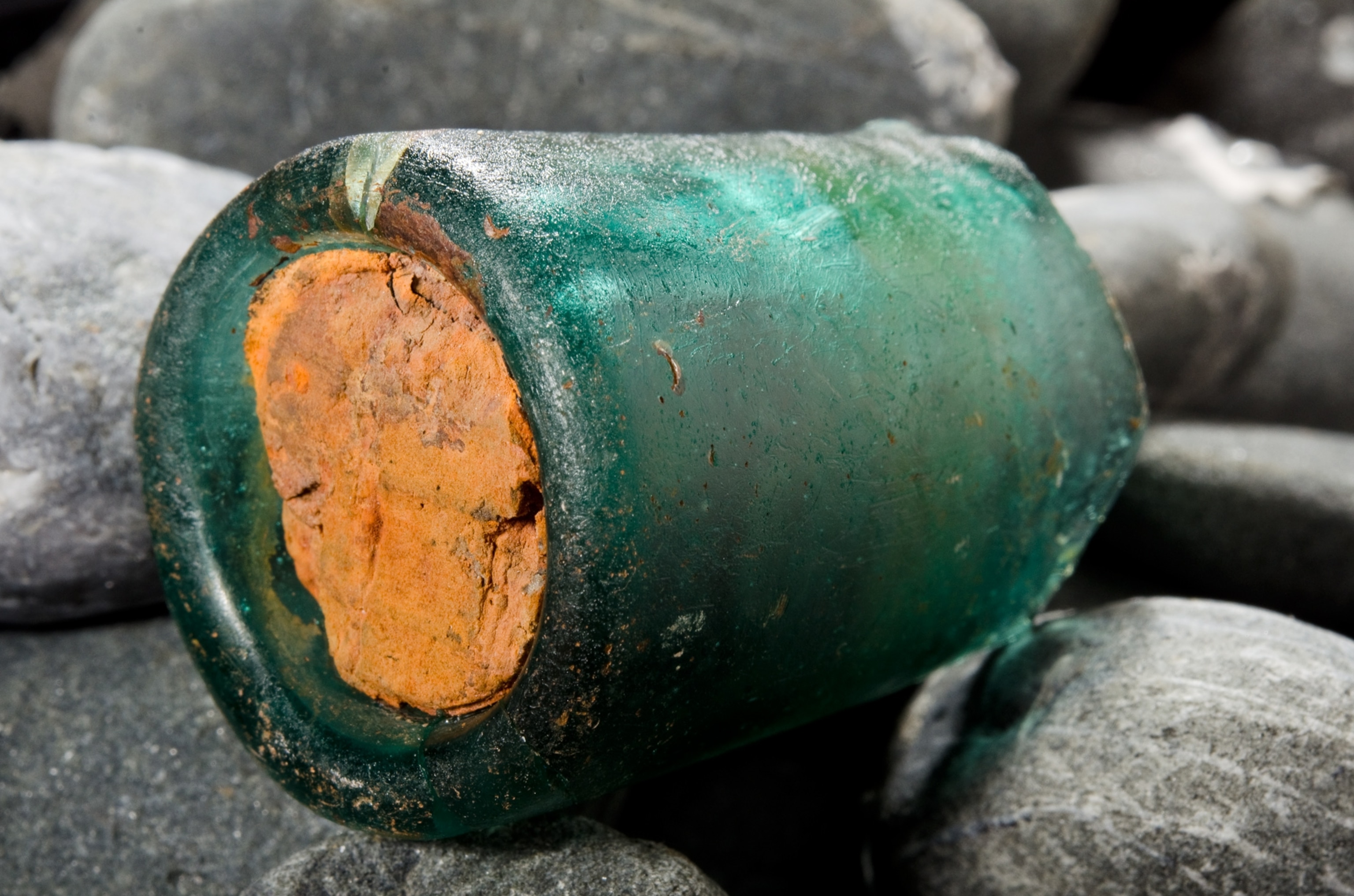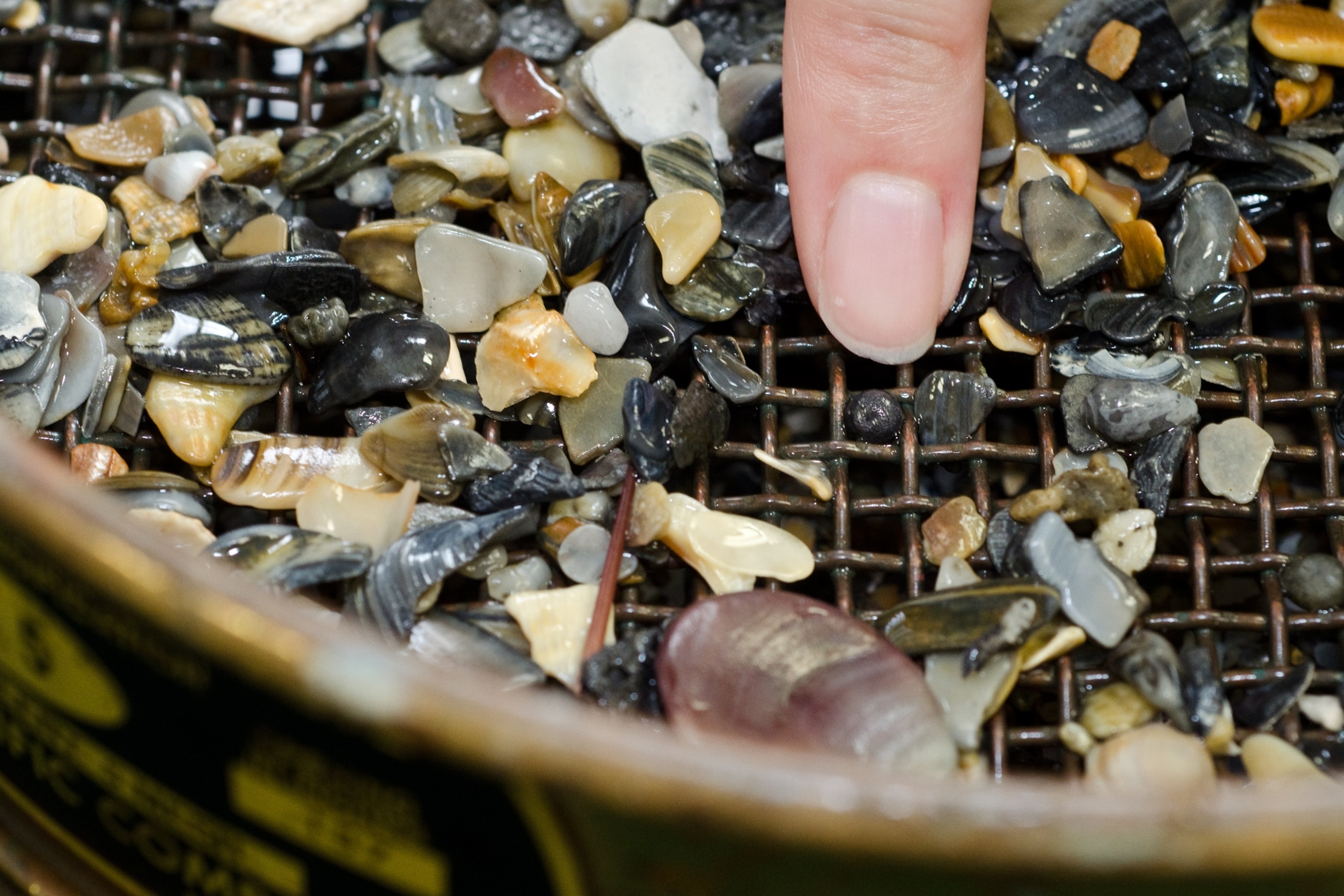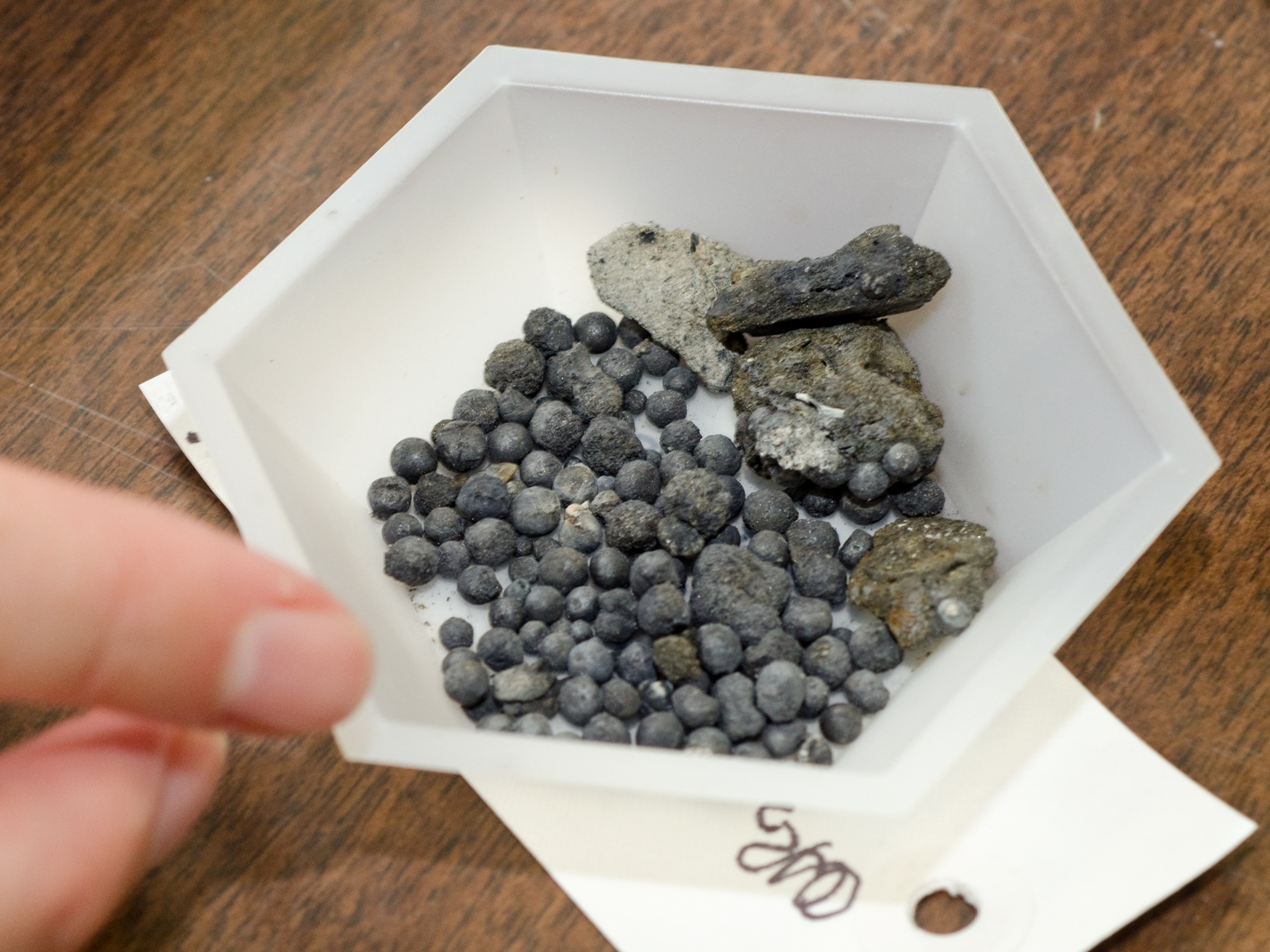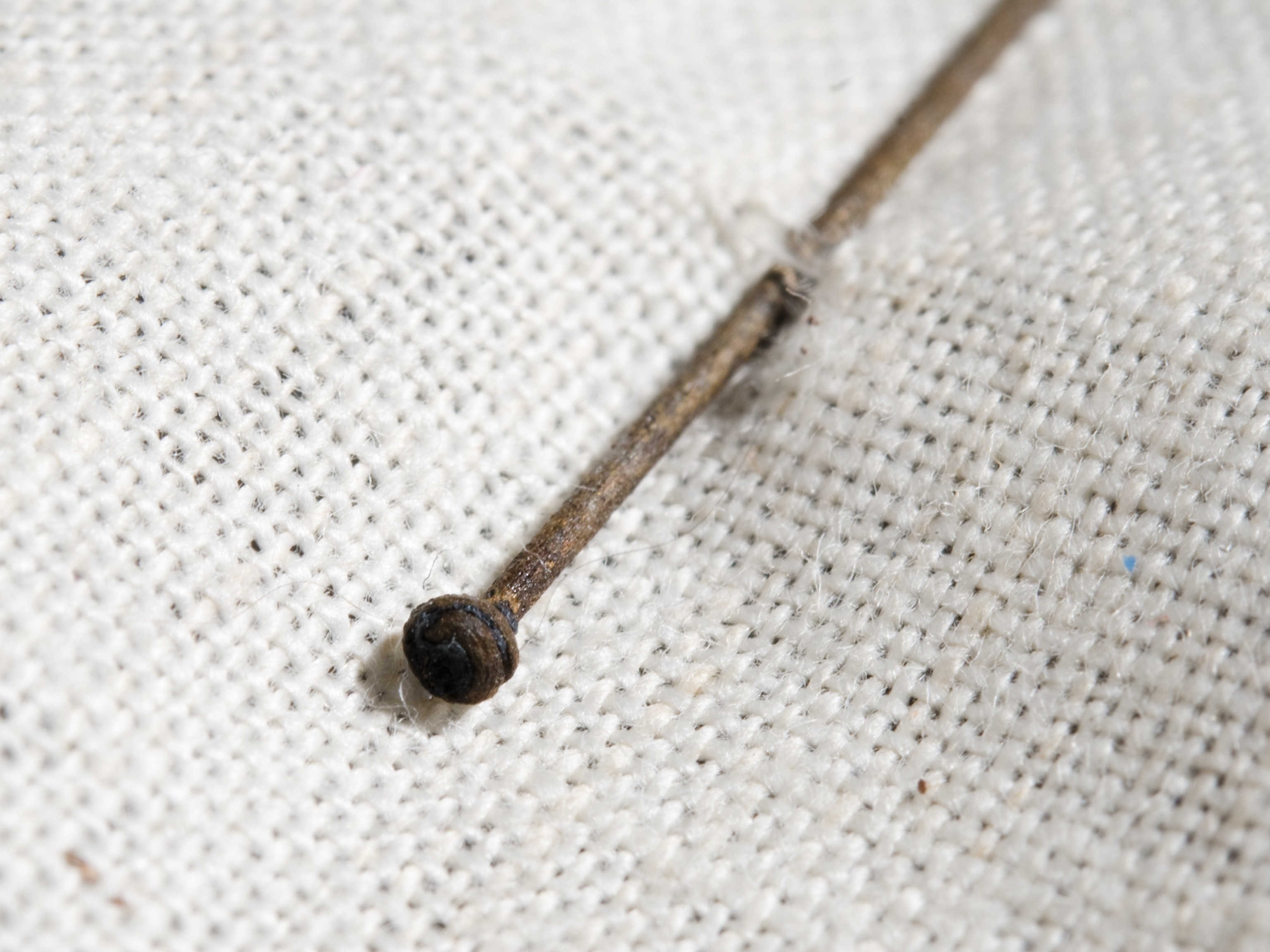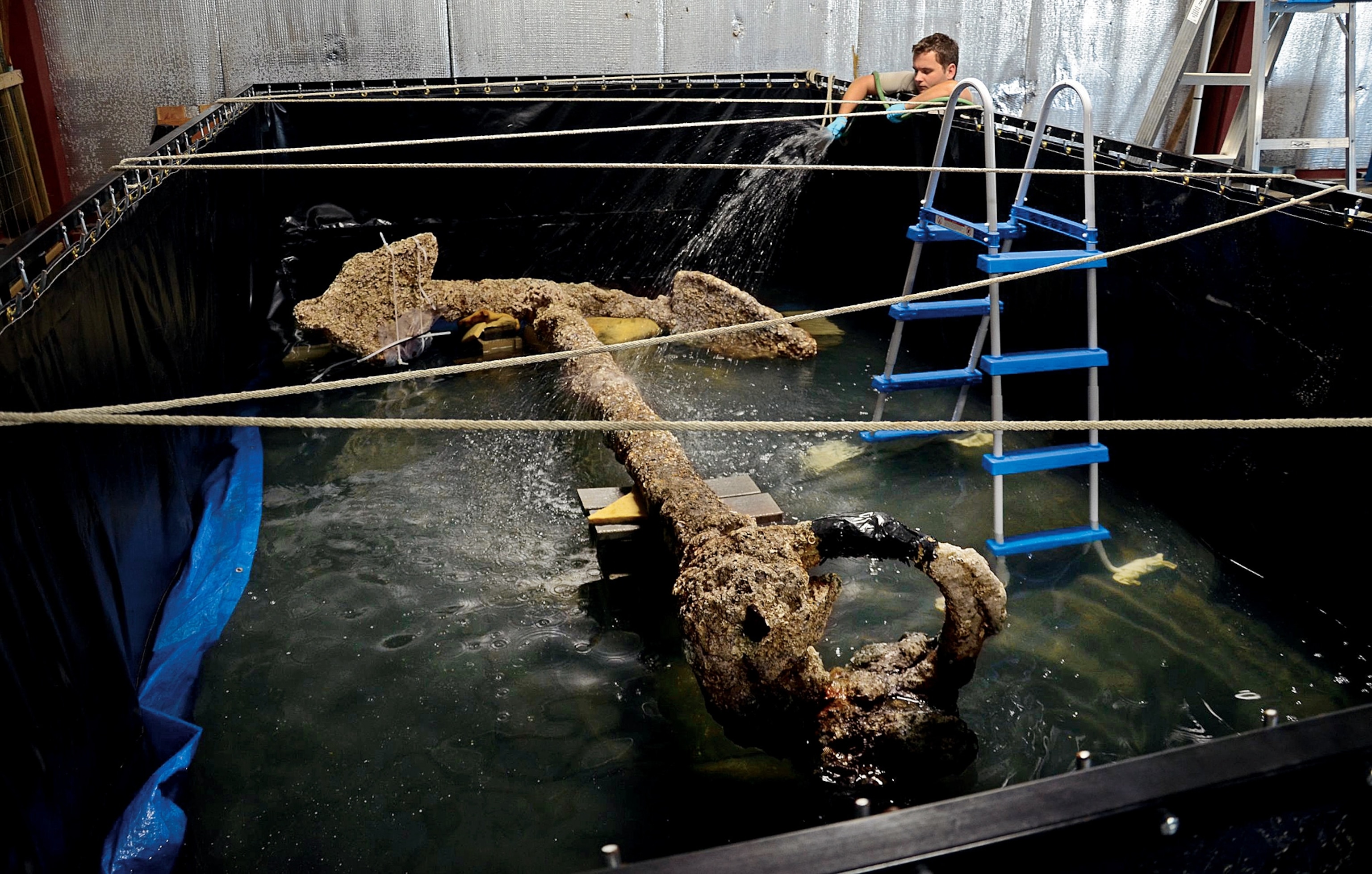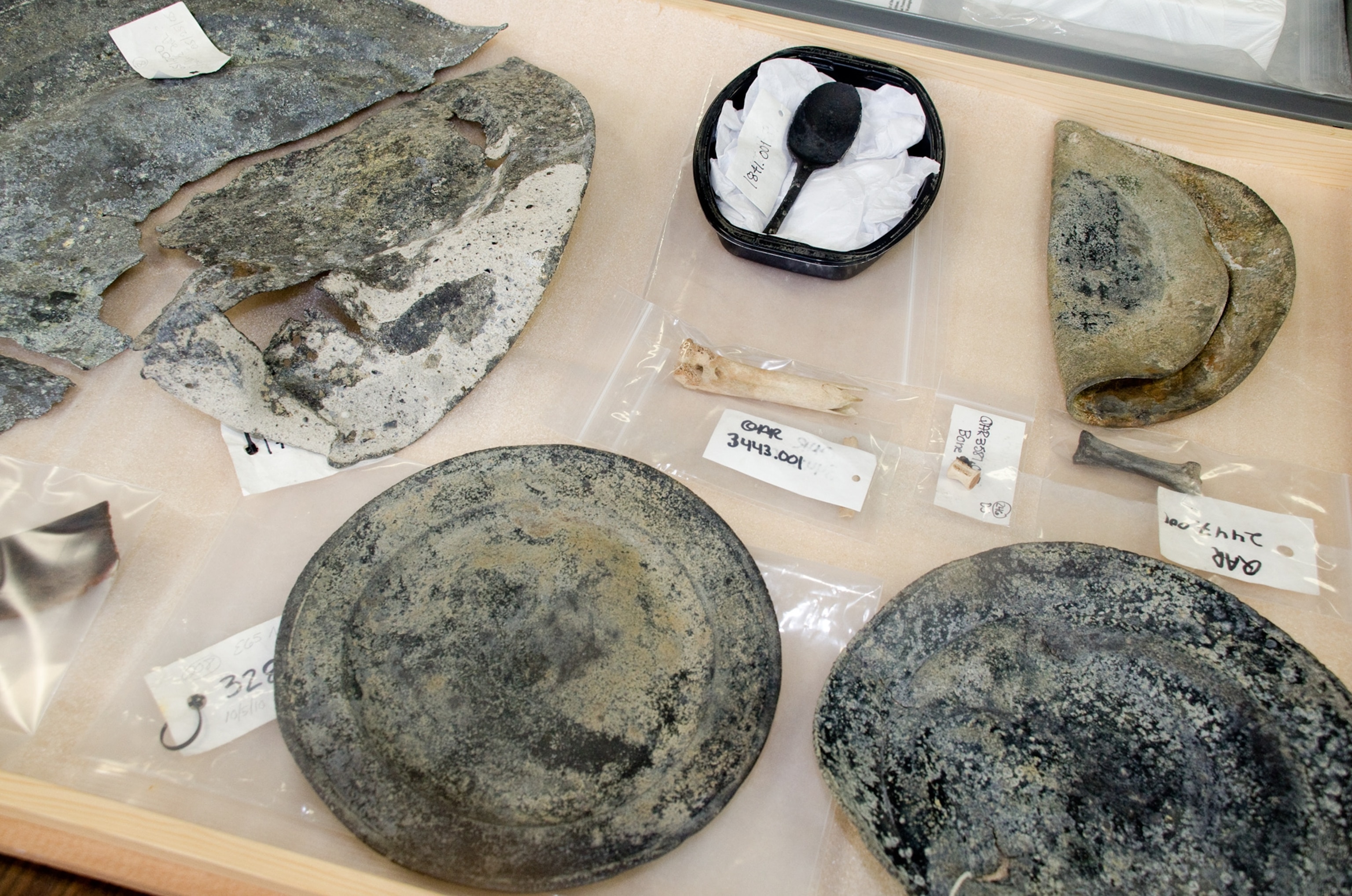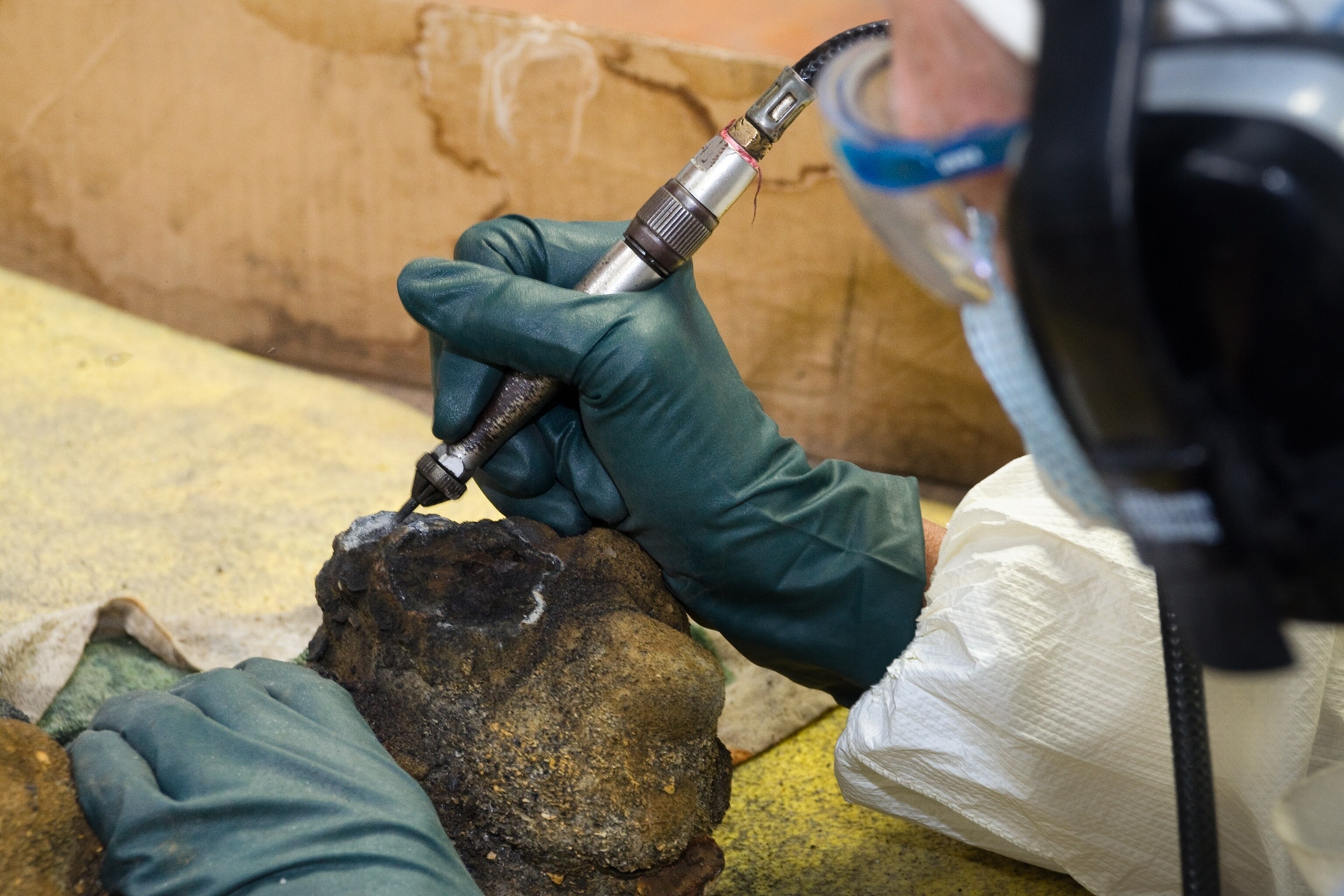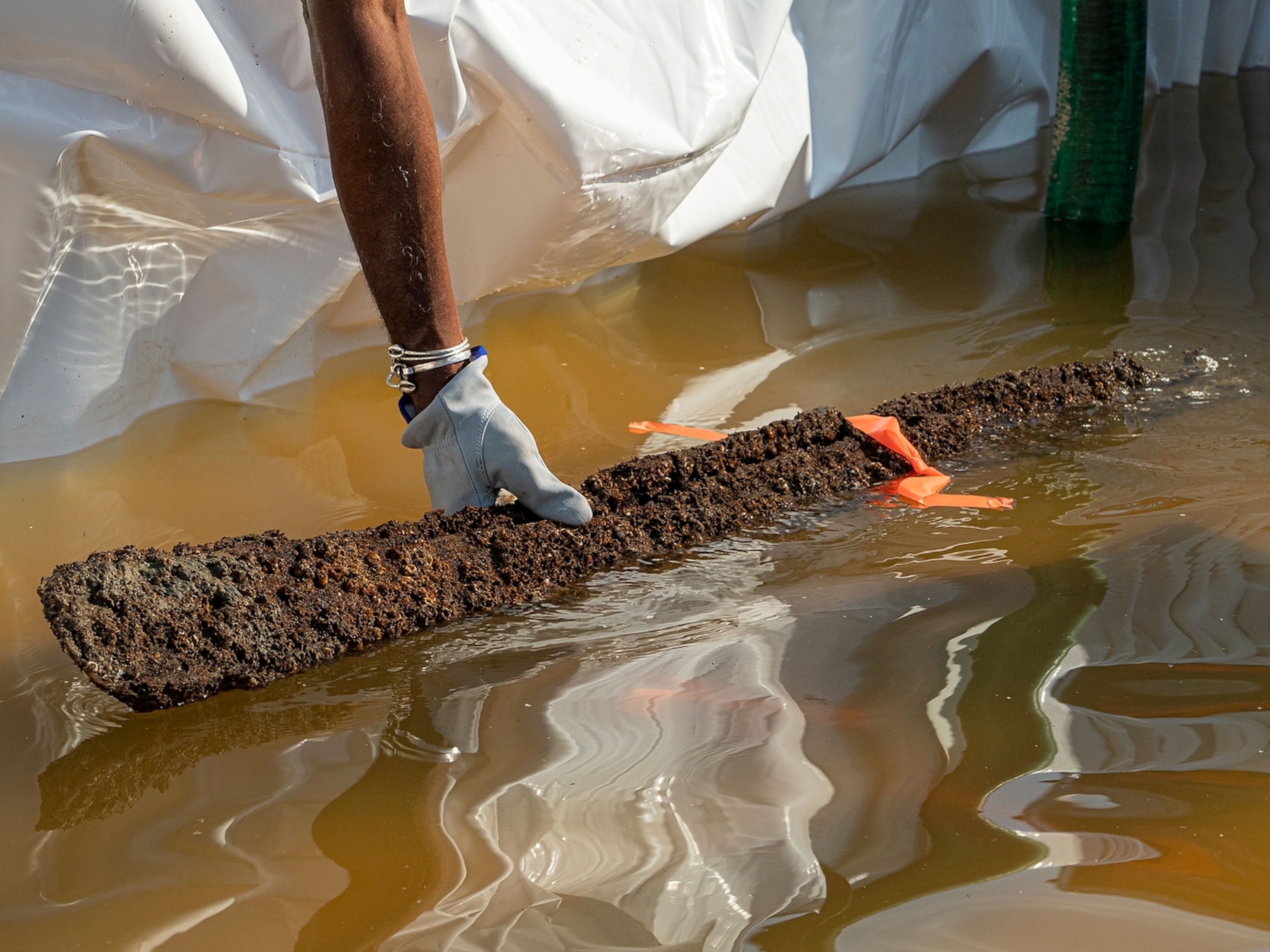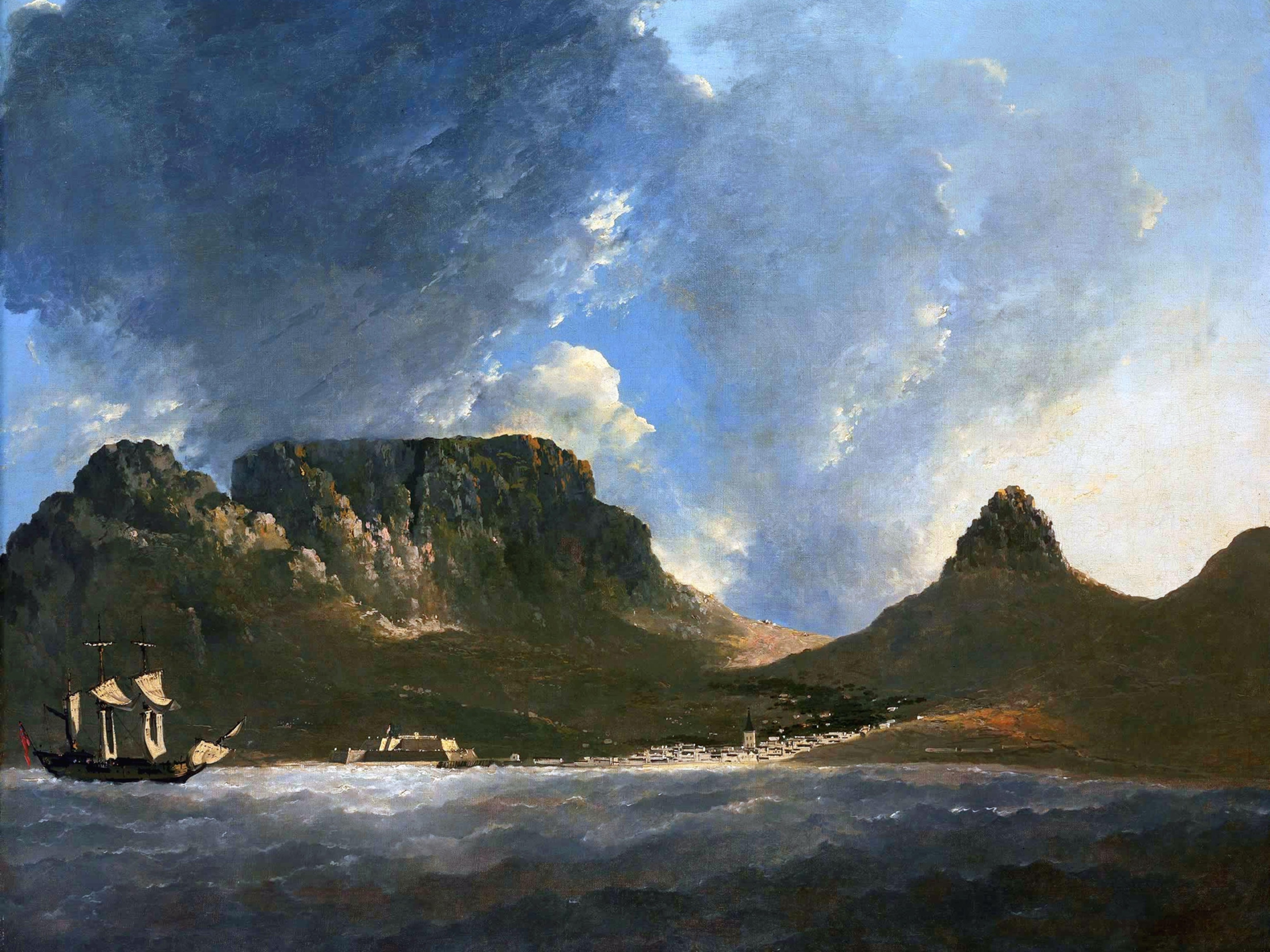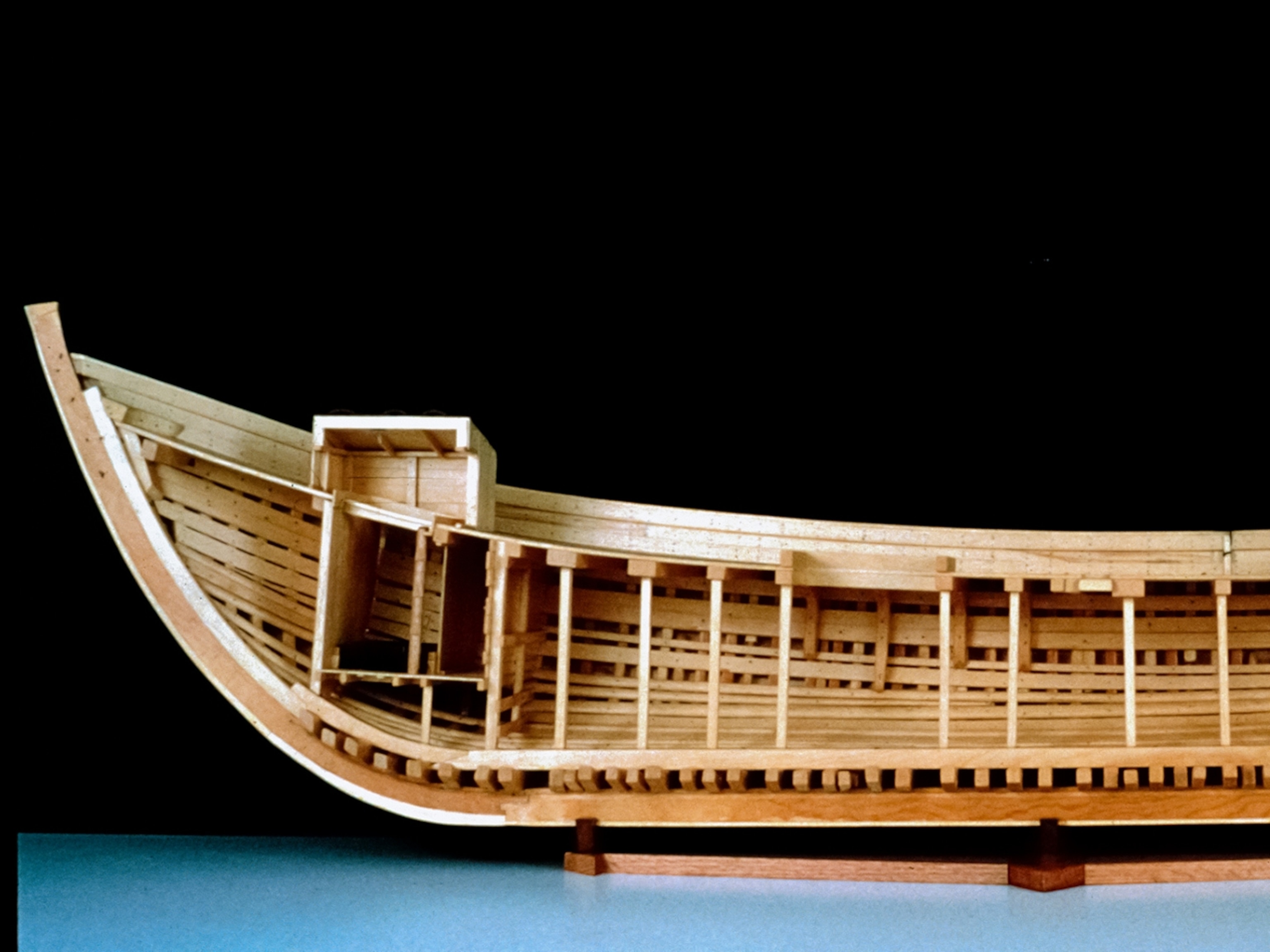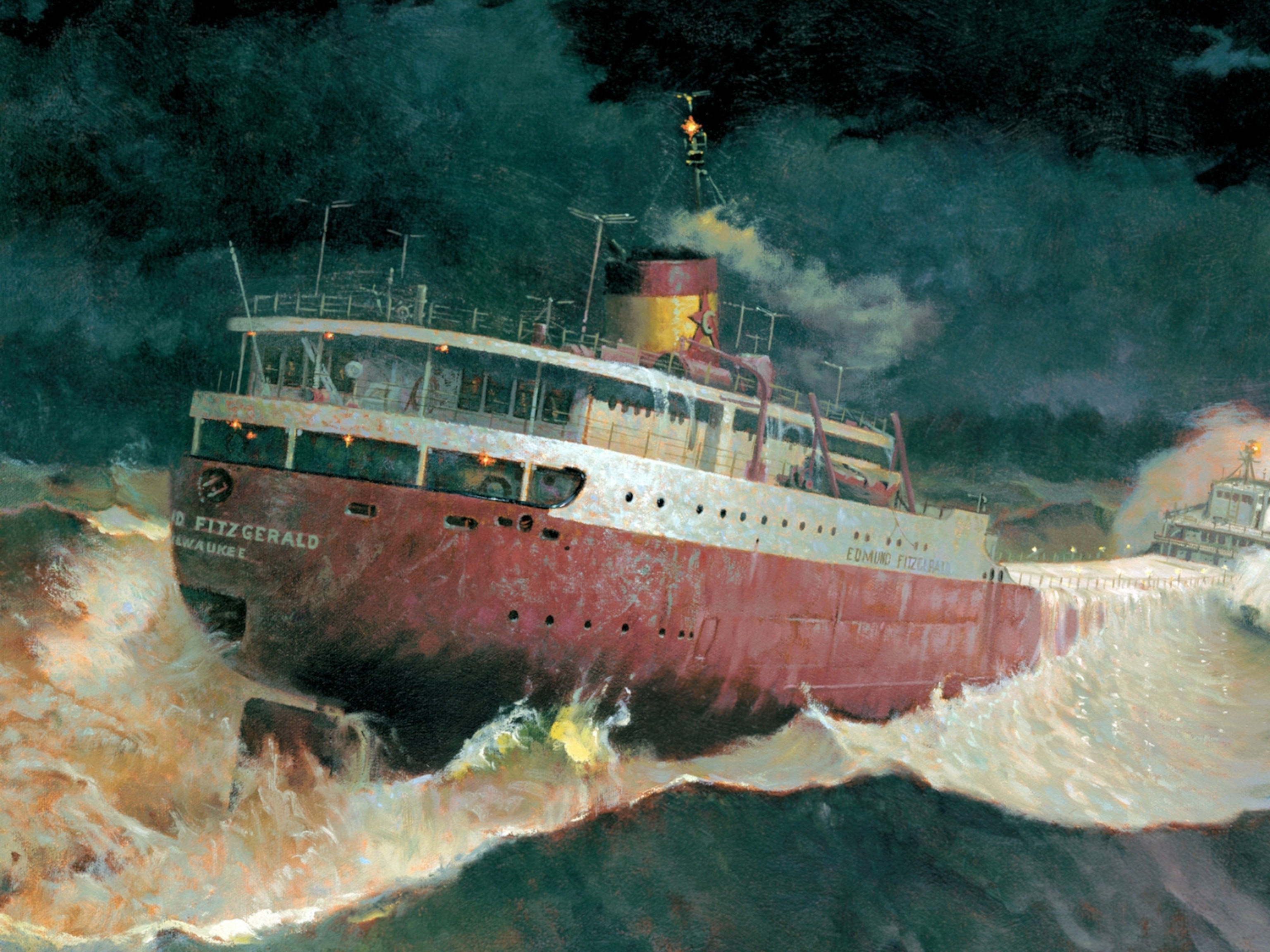This 18th-century iron shackle was recently recovered from the wreck of the Queen Anne's Revenge, which belonged to the infamous Caribbean pirate Blackbeard.
The ship was discovered by the Florida-based exploration company Intersal, Inc., just off of Beaufort (map), North Carolina, in 1996, though it wasn't confirmed as Blackbeard's until 2011. For more than a decade a team from the North Carolina Department of Cultural Resources has been recovering artifacts from the shipwreck and painstakingly restoring them at East Carolina University in Greenville, North Carolina.
Such shackles were used to imprison people, such as slaves en route to the New World, prisoners being held for ransom, or unruly sailors being punished for misdeeds. The shackle was wrapped in rope to prevent chaffing on the wrists and ankles of the imprisoned person.
This instrument is likely from Queen Anne's Revenge's pre-piracy days, when she was a French slave ship called La Concorde.
Blackbeard captured La Concorde in 1717, renamed her, and used her to terrorize seas from the Caribbean to the coast of colonial America.
(Related: exclusive pictures of Blackbeard pirate relics and gold.)
—Willie Drye
